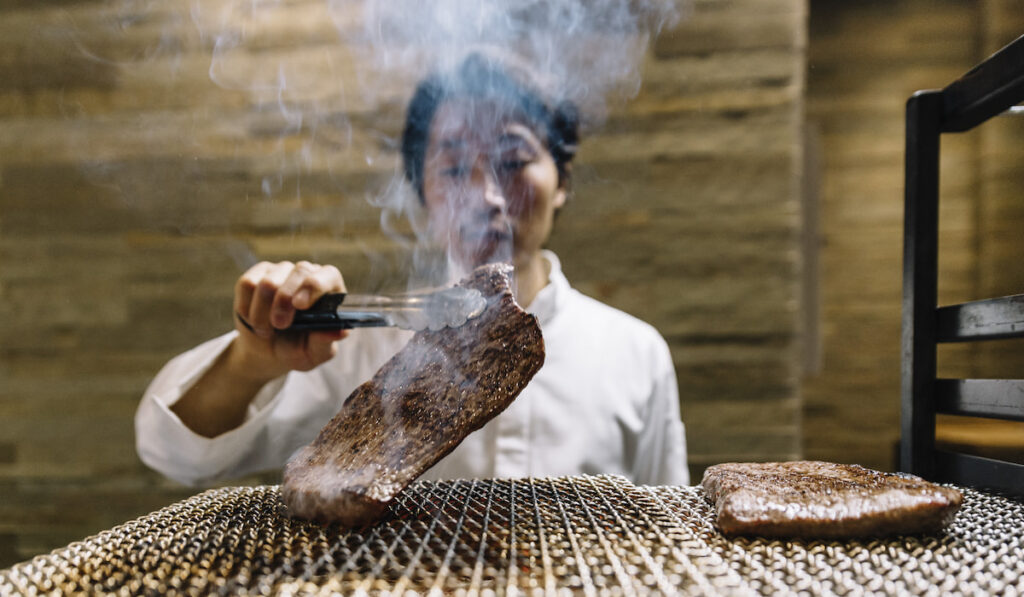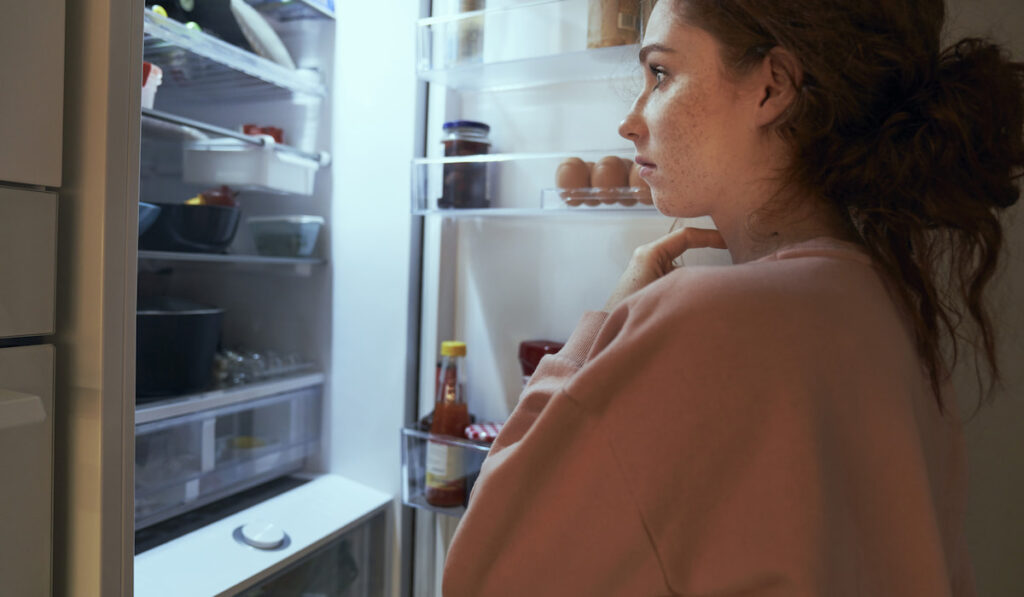Once the roast beef’s expiration date has passed, you start to examine it more carefully, prodding, sniffing, and prodding the meat for indications of enigmatic and all-too-ominous spoilage. The “sell by” and “best by” dates on food, including commercially packaged roast beef and cold cuts from your grocer’s deli, have more to do with taste than food safety, so you might want to tone down your anxiety. Your own senses are typically the most accurate way to judge edibility and freshness.
Your first examination of suspect roast beef will probably be visual. If the meat isn’t exactly the same color as it was when you bought it, don’t worry about it. According to the USDA, color changes in meat due to simple oxidation are normal. Visual inspection alone isn’t enough to decide whether or not you should put the roast beef on a sandwich because, more often than not, your roast beef will fade or darken after some time in the fridge.
What Happens If You Eat Bad Beef Roast?
Eating stale or rotten food is never beneficial for your digestive system, no matter how well-equipped your stomach is.
You should never take a chance eating spoiled food, especially when it comes to meat and meat products. Several pathogenic bacteria that can cause a variety of foodborne illnesses can be found in a spoiled beef roast.
Your first sign of potentially eating a bad beef roast is diarrhea. When unhealthy food enters your body, it will make every effort to eliminate it. Due to this, vomiting and loose stools are commonly observed.
The primary cause of bacterial growth in beef is prolonged room temperature storage. A bad beef roast contains a number of microorganisms that can damage your intestine and stomach. The most common bacteria include Salmonella and E. coli. These can cause fever, diarrhea, and vomiting.
Cook the beef roast thoroughly and never leave it half cooked to prevent all these worst symptoms. The most typical environment for bacterial growth is on raw or improperly cooked food.
What Does Bad Beef Roast Smell Like?

The simplest method of determining whether or not a beef roast has gone bad is to conduct a smell test. The condition of the meat can be determined without even tasting it. Whether something is cooked or raw, both can pass the smell test.
While the smell of fresh meat is not very noticeable, that of rancid meat is very strong.
A very potent tangy odor will indicate spoiled meat. You can notice this unbearable putrid odor from far away. Eating a beef roast with this smell is not recommended. This changed odor is an indication of bacterial growth.
Lactobacillus species and Pseudomonas species are the most frequently discovered microorganisms in bad beef.
In some circumstances, you might not smell anything fishy but can still see some visual cues. In such circumstances, you must abide by visual cues and discard any spoiled beef right away. Some of these indications include a slimy or sticky texture. You should not eat beef that has turned brown or grey.
How Long Does Beef Roast Last In The Fridge?

One of the most crucial steps in creating a good meat recipe is storing the meat properly. A little beef handling error can ruin your meal. Therefore, it’s crucial to monitor how long beef is left out at room temperature and when it’s put in the refrigerator.
You can easily keep raw beef in the refrigerator for two to three days. Deli beef can be kept for about a week. For better storage, it is preferable to freeze the beef. The beef should be packaged or sealed in an airtight container before being placed in the freezer.
Refrigeration and freezing depend on the temperature. Maintaining a safe temperature will guarantee that the beef roast is stored properly. Keep the freezer’s temperature near zero degrees Fahrenheit. The meat will be safe and retain all of its nutrients at such a low temperature.
When coming to refrigeration, the temperature should be around 35oF. This will help keep the meat products safe and healthy. Keep track of the time while considering all of these factors.
The recommended storage period for frozen raw beef is 4-6 months. While deli meat should be frozen for just 1-2 months.
If The Beef Roast Turned Brown In The Fridge Is It Bad?
When kept in the refrigerator or freezer for an extended period of time, meat, and beef in particular, can change color. Not everything we see is necessarily the meat going bad. Not all color changes indicate whether or not the beef has gone bad. Sometimes the discoloration can be due to metmyoglobin.
This is a process by which the meat’s myoglobin, when exposed to oxygen, changes the color of the meat. Color change can occasionally result from freezing and refrigeration. Temperature changes can also cause color changes.
You must also take into account other indicators in order to confirm that color change is a sign of bad beef. Do check the smell of the beef. The beef is unfit for consumption if it is tangy or putrid. You must consider other visual signs as well. The beef is unfit for consumption if it has a slimy or sticky texture.
Think about all of these factors when determining whether your meat is fit for consumption. To ensure that the meat you are eating or serving is not bad, pay attention to the smell, color changes, and presence of a tangy flavor.
How can I tell if my meat’s gone bad?
FAQ
What does roast beef smell like when its bad?
Bad meat will have a sour aroma that is reminiscent of spoiled milk. Additionally, it will change from being red to a dark brown shade. It’s better to throw away any meat in your refrigerator that has an odd smell or color than to take a chance.
Is roast beef bad if it turns brown?
The chemical changes in myoglobin brought on by the presence of oxygen are what cause this darkening, or oxidation. This is a normal change during refrigerator storage. It is not advisable to use beef that has turned brown due to prolonged storage because it may be spoiled, smell bad, and be tacky to the touch.
How long is roast beef good for in the fridge?
The USDA suggests using cooked beef within 3 to 4 days while keeping it chilled (at 40°F or less). Refrigeration slows but does not stop bacterial growth. USDA recommends using cooked leftovers within 3 to 4 days.
